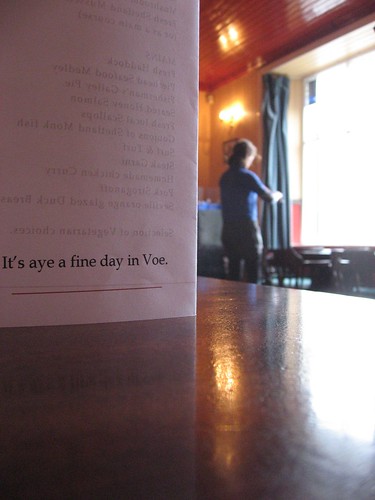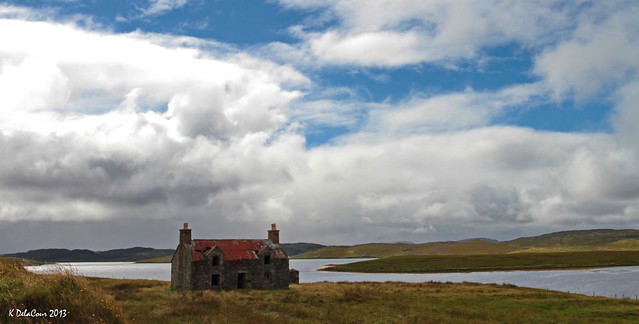 The latest tune we looked at is a popular Shetland reel called Sleep Soond I’da Mornin’ (Sleep Soundly in the Morning).
The latest tune we looked at is a popular Shetland reel called Sleep Soond I’da Mornin’ (Sleep Soundly in the Morning).
The tune uses a G# in the A part and is good for getting to grips with the challenges of doing this on the flute or whistle. Half-holing (uncovering half of the G hole is a common way of doing it. This takes getting used to in terms of accuracy, but you may find that playing A and placing the F# finger down will produce a good effect. This will of course depend on your instrument and also the octave so it is worth taking the time to experiment.
Resources for this tune have been uploaded.
Fiddle playing is enormously popular in Shetland and it has a very strong and distinctive repertoire and style. Some of this popularity will have been down to the success of The Boys of the Lough, which has featured Shetland fiddler Aly Bain and County Fermanagh flute player, whistler and singer Cathal McConnell.
I mentioned Catriona MacDonald (Shetland), Gavin Pennycook (Celtic nyckelharpa project) and Sarah-Jane Summers (Norwegian hardanger fiddle influence) as people worth listening to and I could have added many more of course. Fiddler’s Bid, both collectively and as solo members are also worth listening to.
In searching around, I found this early edition of Haand Me Down Da Fiddle as an online PDF. This is a definitive collection of Shetland tunes and method for the fiddle and the issue of copyright does occur to me here, so I hope it is OK to share the link that I found via a Google search.
Photo: It’s aye a fine day in Voe by Duncan Cumming, some rights reserved.

 The Slow and Steady class have been enjoying Breton tunes lately and this tune is a nice contrast to the recent Gavotte Ton Double. In keeping with many Breton tunes, this one has no title other than An Dro, which simply translates as The Dance, in other words it is the principal dance form of Brittany.
The Slow and Steady class have been enjoying Breton tunes lately and this tune is a nice contrast to the recent Gavotte Ton Double. In keeping with many Breton tunes, this one has no title other than An Dro, which simply translates as The Dance, in other words it is the principal dance form of Brittany. Last night the Slow and Steady class learned a Breton tune that I have since discovered is an untitled Ton Double Gavotte from the playing of fiddler Kevin Burke on his
Last night the Slow and Steady class learned a Breton tune that I have since discovered is an untitled Ton Double Gavotte from the playing of fiddler Kevin Burke on his 
 The Improvers class resumed this week with a lively piece of music from the Western Isles via Northern Ireland.
The Improvers class resumed this week with a lively piece of music from the Western Isles via Northern Ireland.